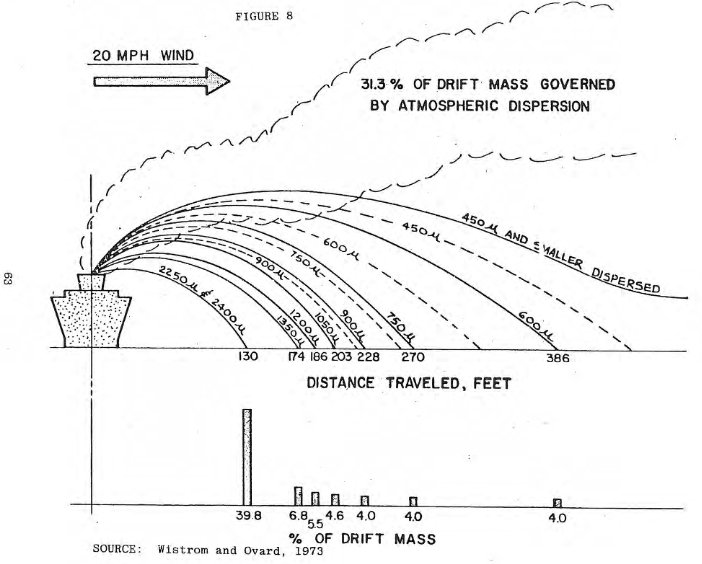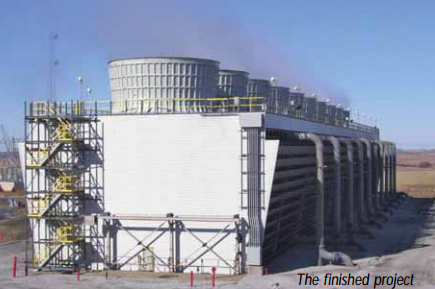This tool calculates the particulate matter (PM) emissions including particulate size fractions (PM10 and PM2.5) from cooling tower water drift. The premise of this calculation is that when water droplets that escape from a cooling tower evaporate, they leave behind any solids that were dissolved in the water. Assuming those solids form a single round particle, the size of that particle can be determined by the size of the water droplet, the concentration of the total dissolved solids (TDS) in the droplet, and the density of TDS constituents.
Download the Cooling Tower Particulate Air Emissions CalculatorCooling towers can be part of any industrial process that requires cooling. Air Sciences frequently encounters them in the mining industry and at power generation facilities. In wet cooling towers, fans force hot air though a body of flowing water to rapidly cool it down. This causes some of the water to be trapped in the air stream and carried out of the tower as “drift” droplets. Large droplets settle out near the tower (as shown in the image below), but smaller droplets can be carried into the atmosphere, where the water evaporates leaving behind particulates.
The Calculator is a refinement of the default EPA method used to calculate particulate matter emissions from these wet cooling towers due to water droplets escaping. The EPA method simply uses the calculated drift loss and the estimated total dissolved solids (TDS) in the water to calculate TOTAL particulate emissions. The EPA method does not consider the size of the particles, nor does it take into account the localized deposition, which can significantly over-estimate PM10 and PM2.5 emissions.
The Calculator refines the emissions calculation by breaking the particulate into size fractions and eliminating the largest droplets that will settle near the tower before evaporating and should not be included in the calculation of total particulate emissions. It also allows for separate calculation of PM2.5, PM10, and total PM, each of which may be required for a facility emissions inventory and dispersion modeling.
This method of speciating by particle size is widely supported and has been endorsed by the New Mexico Air Quality Bureau, Minnesota Pollution Control Agency, California Energy Commission, and Canadian National Pollutant Release Inventory. It has been used for permits approved in Colorado, Mississippi, Michigan, Maryland, California, Texas, Idaho, Florida, and Puerto Rico.
Air Sciences Inc. specializes in air pollution compliance, air quality consulting, and environmental consulting. Since 1980, we have worked with industry and government clients. Industry sectors have included minerals extraction and refining, power production, natural gas processing, chemical manufacturing, painting processes, and pesticide formulation. Government work has included fire emissions modeling and fire effects model development for federal land managers, and studies of dust movement, modeling, and mitigation for the EPA.
Air Sciences’ in-house services include ambient and meteorological monitoring, regulatory interpretation and application, permitting and compliance, emission inventories, air quality impact assessment, air dispersion and visibility modeling, forest ecology and fire science work, pollution control technology, chemical and process engineering, and data analysis. Our staff of scientists and engineers specialize in air quality, stay informed of changing technologies and regulations, and are committed to customer service while working in the most efficient and cost-effective manner possible.



Great post ; nice blogs really useful